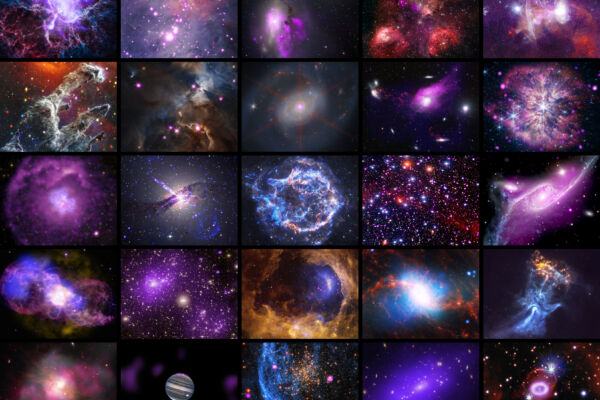To celebrate the 25th anniversary of the launch of the Chandra X-ray Observatory, NASA has released 25 new images captured by the observatory. These images showcase a spectacular array of cosmic entities that are truly awe-inspiring.
According to a report on the NASA website on July 22, these 25 never-before-seen images were all created using data observed by the Chandra X-ray Observatory. They demonstrate how astronomers are using X-rays to explore various corners of the universe.
By combining the X-ray data from the Chandra X-ray Observatory with data from other space and ground-based telescopes, astronomers are able to investigate long-standing mysteries in the universe, much like many other images have allowed them to do.
The Chandra X-ray Observatory is the most powerful X-ray telescope in the world. It was launched into space on July 23, 1999, aboard the space shuttle Columbia. It operates on an elliptical orbit at about one-third of the distance from the Earth to the Moon.
Pat Slane, director of the Chandra X-ray Center, highlighted that over the past quarter-century, the Chandra X-ray Observatory has continuously made remarkable discoveries. Scientists have used the Chandra telescope to study mysteries that were unknown even during the telescope’s construction, including exoplanets and dark energy.
X-rays are a type of highly penetrating light that can reveal extremely hot objects and very active physical processes. In X-rays, many fascinating regions in space emit intense radiation, such as fragments from stellar explosions and matter swirling around black holes. Stars, galaxies, and even planets emit X-rays that can be studied using the Chandra X-ray Observatory.
Over the past 25 years, the Chandra X-ray Observatory has made nearly 25,000 astronomical discoveries. The 25 new images released by NASA are just a small fraction of these discoveries.
One of the images in this collection showcases the stunning appearance of the NGC 6872 spiral galaxy. Located in the Pavo constellation, NGC 6872 has a diameter of 522,000 light-years, making it more than five times the size of the Milky Way galaxy. Astronomers discovered in 2013 that NGC 6872 is the largest known spiral galaxy to date. This record was later surpassed by NGC 262, which has a diameter of up to 1.3 million light-years.
Today, astronomers continue to combine data from the Chandra X-ray Observatory with data from other telescopes for research, including NASA’s James Webb Space Telescope.
For example, in collaboration with the Chandra X-ray Observatory and James Webb Space Telescope, astronomers discovered evidence of the existence of the most distant black hole last year.
The research related to Chandra has produced over 700 Ph.D. holders, approximately 1,700 post-doctoral researchers, and more than 5,000 unique principal investigators worldwide.
Over the years, scientists have authored over 10,000 peer-reviewed papers based on Chandra’s data, garnering nearly 500,000 citations, making it one of NASA’s most productive missions in the field of astrophysics.

